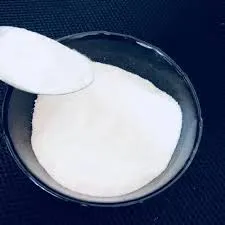
Oct . 18, 2024 08:28 Back to list
Hydroxyethyl Cellulose Current Market Pricing Analysis Per Kilogram
The Market Dynamics of Hydroxyethyl Cellulose Price Trends and Factors Influencing Cost
Hydroxyethyl cellulose (HEC) is a water-soluble polymer derived from cellulose, characterized by its ability to act as a thickening agent, film-forming agent, and stabilizer in a variety of applications. The versatility of HEC has made it a crucial component in industries such as pharmaceuticals, cosmetics, food, and construction. As demand for HEC continues to grow, so too does the importance of understanding its pricing dynamics.
Understanding Hydroxyethyl Cellulose
HEC is synthesized by the etherification of cellulose, a natural polymer extracted from plant materials. The modification of cellulose through hydroxyethylation enhances its solubility in water, making it suitable for aqueous systems. Its properties include excellent thickening, emulsifying, and gelling capabilities, which are essential for creating stable formulations in various products.
Current Market Price Trends
As of late 2023, the price of hydroxyethyl cellulose typically ranges from $5 to $15 per kilogram, depending on the grade, purity, and specific application requirements. This pricing is influenced by several factors, including raw material costs, production methods, and market demand.
1. Raw Material Costs The primary raw materials for producing HEC are cellulose and ethylene oxide. Fluctuations in the availability and price of these raw materials can have a significant impact on the overall production cost of HEC. For instance, any disruption in the supply chain, such as geopolitical tensions or natural disasters affecting production regions, can lead to price increases.
2. Production Capacity and Efficiency The scale at which manufacturers operate—along with their production efficiency—plays a crucial role in determining the price of HEC. Larger manufacturers often benefit from economies of scale, allowing them to offer competitive prices. Furthermore, technological advancements that improve the efficiency of the production process can help reduce costs, positively influencing market prices.
3. Demand in End-user Industries The demand for hydroxyethyl cellulose is closely linked to various end-user industries. The construction sector has seen significant growth due to increased infrastructure projects worldwide, driving up the demand for various additives, including HEC for adhesives, paints, and coatings. Additionally, the cosmetic and personal care industry relies heavily on HEC as a thickener and stabilizer in lotions, creams, and gels, further contributing to price dynamics.
hydroxyethyl cellulose price per kg

4. Regulatory Compliance Compliance with safety and environmental regulations can also affect prices. Manufacturers may need to invest in technologies that reduce environmental impact or ensure product safety for consumer goods. While these investments can lead to higher production costs, they also promote sustainable practices and can enhance brand value, justifying price increases.
Regional Variations in Pricing
The price of hydroxyethyl cellulose can also vary significantly by region. In Asia-Pacific, particularly in countries like China and India, HEC production is generally more affordable due to lower labor costs and abundant raw materials. In contrast, North American and European markets may experience higher prices due to stricter regulatory standards and higher operational costs.
Future Outlook
Looking ahead, the hydroxyethyl cellulose market is expected to continue evolving. As industries seek eco-friendly and sustainable solutions, demand for bio-based and modified cellulose derivatives is anticipated to grow. Innovations in production processes, such as the development of more efficient methods to synthesize HEC, could lead to reduced costs and potentially lower prices for consumers.
Moreover, global economic trends, including inflation and currency fluctuations, will play a fundamental role in shaping hydroxyethyl cellulose prices. As businesses navigate these changing economic landscapes, they must remain adaptable and responsive to market conditions to maintain competitive pricing strategies.
Conclusion
Hydroxyethyl cellulose remains a vital component across various industries, with its market dynamics influenced by raw material costs, production efficiencies, and demand fluctuations. Understanding the factors that impact HEC pricing is essential for businesses aiming to optimize their supply chain and cost structures. As the market continues to evolve, stakeholders must stay informed of trends and innovations to effectively navigate the complexities of HEC pricing and ensure sustainable growth.
-
Versatile Hpmc Uses in Different Industries
NewsJun.19,2025
-
Redispersible Powder's Role in Enhancing Durability of Construction Products
NewsJun.19,2025
-
Hydroxyethyl Cellulose Applications Driving Green Industrial Processes
NewsJun.19,2025
-
Exploring Different Redispersible Polymer Powder
NewsJun.19,2025
-
Choosing the Right Mortar Bonding Agent
NewsJun.19,2025
-
Applications and Significance of China Hpmc in Modern Industries
NewsJun.19,2025







